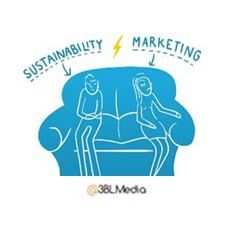
CSR/Sustainability and Marketing professionals have not always been the best of friends. In fact, recently, Thomas Kolster, Creative Director and Author of Goodvertising, and Founder of Where Good Grows, posted a cartoon showing them at opposite ends of a couple’s therapy couch. However, when they do work together and see the benefits, there is potential for transformative, long-lasting social and environmental change.
So what are the requirements for a successful relationship between CSR/Sustainability and Marketing? This was the topic up for discussion at the Net Impact Boston Career Summit on Friday February 21st. Harriet Henry joined John Rooks, President, The Soap Group, Chris Mann, Vice President of Corporate Partnerships, City Year, Kyle Cahill, Senior Manager, Corporate Citizenship, Blue Cross Blue Shield of MA, and Anne Erhard, SVP and NA Director, Corporate & Brand Citizenship, PurPle to discuss ‘Effective CSR Marketing: Aligning CSR Strategy with Brand Marketing Objectives.’
Here are the top five tips for effective CSR marketing discussed by the panel:
1. Start with a great strategy. An effective CSR strategy aligns closely with core business and brand objectives; the more closely aligned, the more successful it will be, and the more authentic any marketing and communications around your CSR activities will be. Take the time to develop a killer CSR strategy and engage your marketing teams in the process, as they understand your brand and target audiences better than anyone.
2. Engage your employees first. Everyone on the panel agreed that it may take time before you’re ready to communicate your CSR activities externally. Typically, your first audience is your employees; they are the people that will execute and bring the CSR strategy to life. They are also the strongest brand ambassadors you will ever have. Only once the CSR strategy is embedded and generating wins internally should you start to think about going external.
3. Don’t try and go it alone – talk and listen to your stakeholders: It’s likely that your CSR strategy will deal with some complex social and environmental issues, and it is unlikely that you will have all the necessary expertise in-house. So go out and find subject-matter experts, nonprofits, and other stakeholders who can help you shape your plans. Even if you think you have a winning strategy, it never hurts to validate what you know and, what’s more, seeking support and guidance is respected and may win you essential allies and partners for the future.
4. Don’t preach: When you’re ready to communicate your CSR initiatives to consumers and customers, remember that they already have a long list of worries and don’t want something else to feel bad about. Make them your partners, treat them like humans and be humble. No one has all the answers and no one is perfect, so be honest and tell your consumers this. In the end, they’ll like you more for it!
5. Make it relevant and fun: As good as it is, your CSR strategy is not what most people want to hear about. Similarly, just because you think something is important or interesting, it doesn’t mean others will. Talk to your consumers and customers, find out what they care about, and then engage them in a fun way that they will remember.
